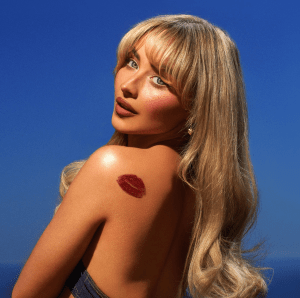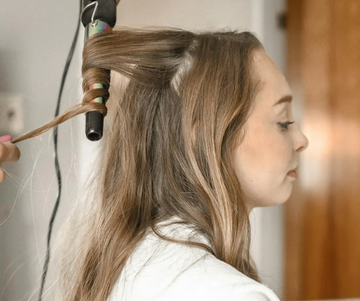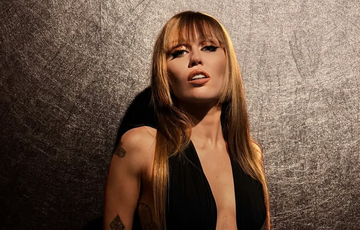Hot or not? The numbers really do matter.
Straightening your hair might seem like a no-brainer. Grab the flat iron, turn it up, and bam—you’re ready to go. But wait a sec. Before you go full throttle with the heat, there's something you should know: temperature matters when it comes to healthy, smooth strands. Cranking up the heat too high? You’re risking fried, frazzled locks. Keeping it too low? Well, say hello to limp, lackluster hair that barely lasts.
Heat gets a bad rap for being damaging (and yeah, it can be), but come on, we’re not going to swear off styling tools, are we? How are we supposed to do our hair without risking serious damage? That’s where the numbers come in. We’ve all had that moment of standing there, staring blankly at our flat iron like, “What setting should I actually use?” And let’s be honest, the confusion is super easy to understand. The perfect heat setting is out there, and it’s the key to straightening your hair without sacrificing its health. Ready to get those straight strands without the stress? That’s what we’re here for.
Now, what temperature for hair straighteners?
You might be thinking, "Okay, but does the temperature really make that big of a difference?" Spoiler alert: yes, it absolutely does. Your hair’s unique texture, thickness, and overall health dictate what temperature setting will give you the best results—without leaving your strands scorched or damaged.
The lowdown on hair types and heat
Here’s the deal: every head of hair is different. What works wonders on one person’s fine, delicate strands might do major damage to someone with thick, curly hair. The key is to tailor the heat to your hair type.
– Fine or damaged hair (250°F - 300°F): If your hair is on the finer side—or you've got color damage or breakage—go easy on the heat. Keep your flat iron between 250°F and 300°F. Trust us, you don’t need anything hotter to get the job done. Too much heat, and you risk snapping those fragile strands right off.
–Normal or medium-textured hair (300°F - 375°F): Got hair that’s in relatively good shape, with a medium texture? You can step up the heat a little, but don’t go wild. Stick between 300°F and 375°F for a smooth finish without frying your hair’s cuticle.
–Thick or coarse hair (375°F - 450°F): If you’ve got thick, coarse, or natural hair, you need more heat to tame it, but even here, there’s a limit. Keep it below 450°F to avoid going from fabulous to frizz in a flash. Anything over that is basically asking for heat damage, no matter how resilient your hair seems.
Why too much heat is a no-go
Here’s where it gets real. Blasting your hair with heat over 450°F is like turning a blowtorch on your strands. Sure, it might look sleek at first, but long-term? Expect dullness, breakage, and a whole lot of regret. Your hair’s natural oils and moisture are key to keeping it shiny and smooth—and excessive heat strips all of that away.
Finding the sweet spot is essential for maintaining the balance between getting your hair straight and keeping it healthy. Now that you know the right range, it's all about dialing it in.
Your hair deserves better! Here’s how to keep it healthy.
Knowing the right temperature is half the battle, but the way you flat iron your hair matters just as much. You wouldn’t crank up the heat on your oven without prepping your food, right? The same goes for your hair. A little bit of prep work and the right technique can save your strands from unnecessary heat damage.
1. Prep like a pro, always using heat protectant
This is non-negotiable! Heat protectant is your hair’s superhero. Without it, your hair is left exposed to the full intensity of your flat iron, which is a surefire recipe for dryness, breakage, and frizz. A good heat protectant forms a barrier between your hair and the high temps, sealing in moisture and locking out damage.
Pro tip: Look for a heat protectant that suits your hair type. Fine hair? Go for something lightweight. Thick or curly hair? Opt for a cream-based or oil formula that adds moisture along with protection.
2. Work in sections, and don’t rush it
We’ve all been there—you're in a rush, so you grab large chunks of hair and speed through with your flat iron. But this shortcut is doing more harm than good. When you work in smaller sections, the heat is distributed more evenly, which means you won’t have to go over the same spot multiple times. Less passes = less heat exposure = healthier hair. Simple, right?
Take it slow, glide the iron smoothly through each section, and let the tool do the work for you.
3. Start low, go slow
Just because your flat iron can go up to 450°F doesn’t mean you should start there. Begin with a lower setting, especially if you're unsure about your hair’s tolerance. Gradually increase the heat only if needed. It's better to do a couple of passes on lower heat than crank it up and risk damage in one go. Remember: it’s not a race.
4. The one-and-done rule
The goal is to get the sleekness you want with as few passes as possible. Going over the same section multiple times can weaken your hair and lead to more damage over time. A slow, steady pass at the right temperature will get you that silky finish without frying your strands.
5. Keep your flat iron clean
You might not think about it, but the build-up of product on your flat iron can seriously mess with its performance. A dirty iron means uneven heat distribution, and you’re essentially burning old product into your hair—not cute. Clean your iron regularly with a damp cloth once it’s completely cooled down to keep things smooth and damage-free.
The temperature breakdown
Now that you know how to prep and handle your flat iron like a pro, let’s get into the heart of the matter: what’s the best temperature for straightening your hair? The answer isn’t one-size-fits-all—it all depends on your hair type, texture, and overall health. Here’s a breakdown of what temperatures to aim for, so you can style without the stress.
Fine or thin hair (250°F – 300°F)
Fine or thin hair is extra sensitive to heat, so lower temperatures are your best bet. Cranking it up too high can lead to breakage and split ends in no time. Stick to a range between 250°F and 300°F to achieve sleekness without sacrificing your strands’ health. A few gentle passes are all you need to smooth things out.
Pro tip: If your hair is super fine, start at the lowest temperature and work your way up only if necessary. You might be surprised by how little heat it actually takes to get the look you’re going for.
Normal or medium hair (300°F – 375°F)
If your hair falls somewhere between fine and thick, you’ve got a bit more flexibility when it comes to temperature. A range of 300°F to 375°F should give you the smooth, shiny results you’re after without causing too much damage. Just remember to follow the same rules: use heat protectant, and don’t overdo it with too many passes.
Thick or coarse hair (375°F – 410°F)
Thick, coarse, or curly hair types need a bit more heat to get the job done, but that doesn’t mean you should jump straight to max temperature. Stick to a range of 375°F to 410°F to straighten your strands without frying them. Coarse hair is naturally more resilient, but it can still fall victim to damage if you go too high on the dial.
Pro tip: For stubborn spots, like around your crown or nape, you might need a little extra heat—but don’t overdo it! If your hair is particularly coarse or textured, consider investing in a high-quality flat iron (ahem, ours?) that offers consistent heat for better results.
Damaged or color-treated hair (250°F – 300°F)
If your hair is already fragile from color processing or previous damage, heat needs to be handled with extra care. Stick to the lower end of the temperature spectrum—between 250°F and 300°F—to minimize further stress on your strands. Pair this with a high-quality heat protectant (bonus points if it’s formulated for color-treated hair) to keep your locks looking vibrant and healthy.
When in doubt, keep it cool
When it comes to flat ironing, if you're not sure what heat setting to use, it’s always *safer* to go lower. We’ve all heard the saying, "If you can’t stand the heat, get out of the kitchen." And trust us, the same applies to your hair. We don’t want any burnt strands or fried ends—because that is NOT cute.
Key takeaways to keep in mind:
– Start low. Always begin with the lowest possible heat setting to minimize damage.
– Consider your hair type. Fine hair? Keep it cool. Coily hair? You can handle a bit more heat (between 375°F and 450°F), but never max out the dial.
– Protect, protect, protect. No matter your hair type, always apply a heat protectant before using your flat iron—because smooth hair isn’t worth it if it’s damaged!
At the end of the day, straight hair should feel like a dream, NOT a nightmare. Stay mindful of your heat settings and take care of your strands. After all, it’s very *mindful*, very *demure* to actually care about your hair.





